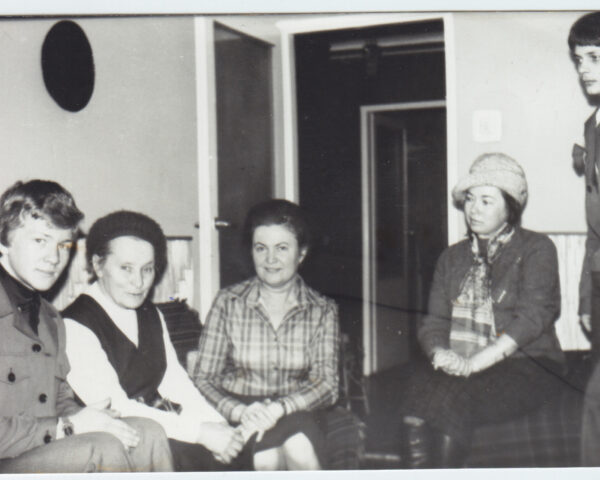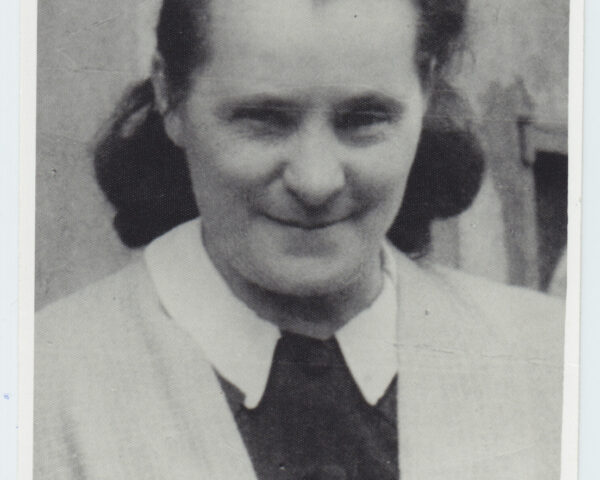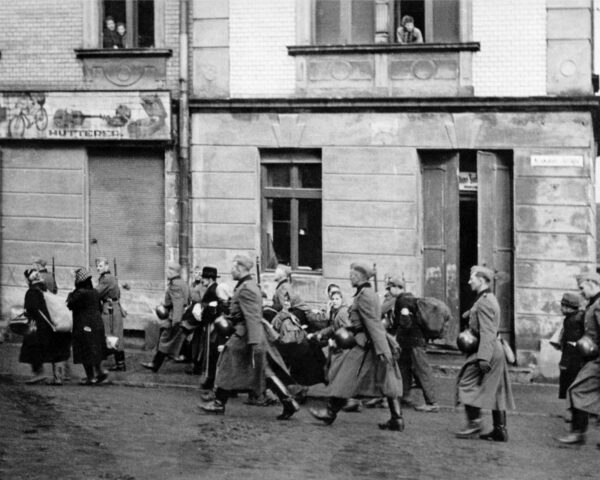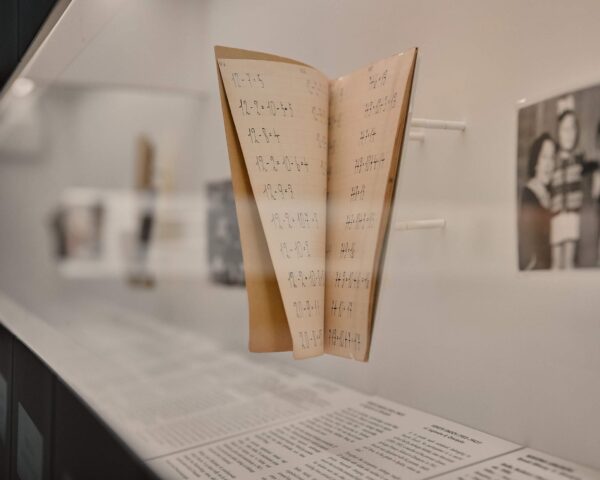“The secret classes comprised grades one to six of elementary school. My first pupils were Halina, Władysław and Leszek Budziło. […] I was also teaching some Jewish children: Anna Lehrhaft, fifth grade, and Henryk Enoch, first grade. They were both deported to Sosnowiec and killed there. […] I don’t remember all of the names. I had 37 pupils in total, but I never wrote down their names anywhere. As you know, it was forbidden to teach Polish children and if you didn’t comply with that, the punishment was very harsh – the teachers, the children and even their parents could lose their lives. For this reason, all the children I was teaching always had some manual job at hand just in case.”
Jadwiga
Marciniak

Stage 3 - Discrimination
“The secret classes comprised grades one to six of elementary school. My first pupils were Halina, Władysław and Leszek Budziło. […] I was also teaching some Jewish children: Anna Lehrhaft, fifth grade, and Henryk Enoch, first grade. They were both deported to Sosnowiec and killed there. […] I don’t remember all of the names. I had 37 pupils in total, but I never wrote down their names anywhere. As you know, it was forbidden to teach Polish children and if you didn’t comply with that, the punishment was very harsh – the teachers, the children and even their parents could lose their lives. For this reason, all the children I was teaching always had some manual job at hand just in case.”
Biography
Jadwiga Marciniak was born in Oświęcim in 1898. She went to school in Oświęcim and Wadowice and passed her maturity exam extramurally at the Men’s Teacher’s College in Kęty. Before WWII, she was a teacher at the Queen Jadwiga Primary School in Oświęcim. During the German occupation, she organised secret classes for Polish as well as Jewish children.
Throughout occupation, Jadwiga was teaching 37 pupils. She would teach them in small groups, constantly switching places and using other sophisticated means of conspiracy. Jadwiga’s husband, Stefan Matlak, also conducted secret classes. He was arrested by the Germans in a round-up and deported to a concentration camp. He went through e. g. Dachau and Mauthausen, where he died in 1941. However, this would not keep Jadwiga from teaching children until the end of the war.
After the war, Jadwiga returned to the same school she had been working at before. One of her pupils was Elinka Kupperman, the daughter of two Holocaust survivors from Oświęcim, Salomon and Regina née Gruenbaum. Elinka was one of the very few Jewish children that were born in Oświęcim after the war.
After the Kuppermans left for Israel in 1962, Jadwiga Marciniak stayed in touch with her former pupil, e. g. by sending her birthday cards every year.
Jadwiga died in 1981.

Today, the Jewish Center in Oświęcim is responsible for commemorating the Jewish history of the city. jpg photo from the collection of the Jewish Center in Oświęcim
Both in Poland and in the world, the city of Oświęcim is mainly associated with Auschwitz, a Nazi concentration and death camp where 1.1 million people perished, including 1 million Jews.
However, the town itself has existed since medieval times and Jewish people started to settle here as early as in the 16th century, as they were fleeing religious persecution in Western Europe. The Jewish inhabitants gave the town the Yiddish name of “Oshpitsin,” which means “guests.”
In 1939, more than half of the city’s population would go to the synagogues to pray. There were Jewish citizens in the town council, the local Jakub Haberfeld factory was exporting its alcoholic beverages to several European countries, and the Jewish Sports Club Kadima (“forward” in Hebrew) Oświęcim was playing in the local soccer league.
In the beginning of WWII, the town was occupied by the Germans and incorporated into the Third Reich. A wave of terror rolled over both the Catholic and the Jewish inhabitants. Jewish people weren’t allowed to go to the synagogues any longer, their belongings were confiscated and they were exploited as forced labourers. In 1941, all Jewish inhabitants of Oświęcim were forcibly relocated to nearby cities like Będzin, Chrzanów and Sosnowiec. From there, most of them were later transferred to the Auschwitz-Birkenau death camp, where they were killed.
Today, the memory of the Jewish community of Oświęcim is maintained by the Auschwitz Jewish Center.
Discrimination
It is a situation in which a person (or a group of people) is treated less favorably than others in the same situation, is marginalized because of a given characteristic (or several characteristics) gender, race, ethnicity, nationality, religion, creed, worldview, disability, age or sexual orientation or other characteristics. The ideology of the dominant group is often based on existing prejudices, stereotypes, and fears to help win public favor and maintain power.
Discrimination can be countered by granting equal rights to all groups in society, prohibiting discrimination based on race, religion, nationality or other grounds, and allowing people to assert their rights in the courts.
How does this person’s story illustrate response to the particular stage of genocide in Dr. Stanton’s theory?
As a teacher, Jadwiga Marciniak actively opposed the exclusion of her Polish pupils from education. In Oświęcim, which had been incorporated into the Third Reich and renamed as Auschwitz, children who didn’t have German citizenship did not have the right to go to school. This complied with the Nazi racial theory: Slavic peoples were to be reduced to a primitive workforce with no intellectual elites and Jewish people did not have the right to live at all. However, the brave teacher recognized that these regulations were discriminatory and actively opposed them, although she put her own life and her family’s life at risk by doing so.
AUTHOR: Maciek Zabierowski, Auschwitz Jewish Center




